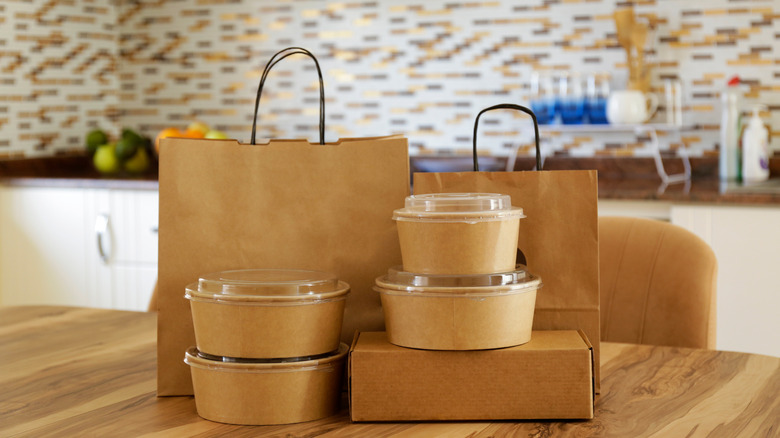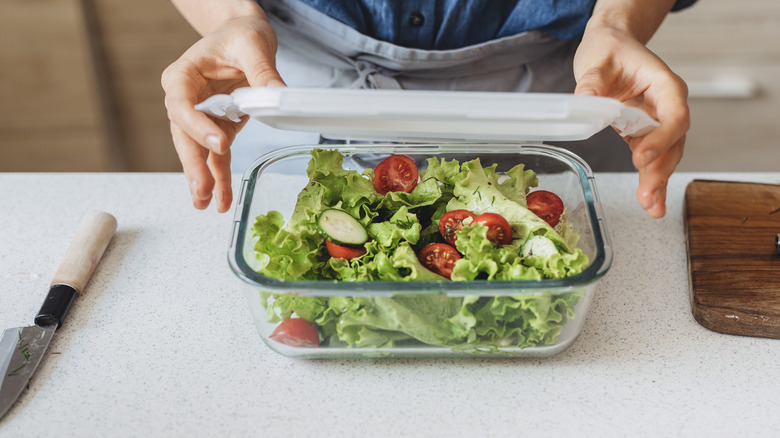What To Know When Bringing In Your Own Containers To Restaurants
With restaurant prices climbing at an even steeper rate than grocery inflation, it's no secret that eating out can be an expensive indulgence, which makes leftovers such a vital part of the dining experience. There's nothing like heating up yesterday's dinner and knowing you got two meals for the price of one — but the disposable takeout containers provided by restaurants can be environmentally costly and not necessarily microwave-safe. With that in mind, some eco-conscious consumers are bringing reusable containers to collect their leftovers.
Whether you're allowed to bring take-home containers to a restaurant depends on local health and safety rules and establishments' policies. If you're packaging leftovers at your table and the container is not coming into contact with the kitchen or the staff, you're probably in the clear. The potential for contamination arises if the container needs to be filled by staff in the serving area since your home Tupperware isn't subject to the same rigorous sanitation standards as a restaurant's. For this reason, some restaurants discourage the practice, though in 2019, California passed Assembly Bill 619 to establish a proper protocol for restaurants that are willing to allow these containers behind kitchen lines.
Beyond safety or legality, there is also the question of etiquette. To avoid committing a dining etiquette faux pas, consider how upscale or formal a restaurant is known to be, as some fine-dining establishments are unlikely to appreciate an interruption to their service flow. When in doubt, you can always call ahead to check a restaurant's policy.
Why you should consider bringing to-go containers from home
Though it may not seem like much, replacing single-use plastic or styrofoam with reusable containers made from sustainable materials is an important step toward reducing harmful waste. The U.S. Environmental Protection Agency (EPA) reported in 2015 that over 23% of the material in landfills comes from containers and packaging, some of which are food-related. Think about it: How much unrecyclable paper, plastic, and styrofoam do you throw away when it's done storing your food?
Even packaging that seems recyclable may not be. Materials that are contaminated with food waste like grease cannot be recycled, and paper containers that have been coated in plastic or wax for sturdiness are usually ineligible for recycling as well. Having your own reusable containers on hand is a great way to circumvent the need for wasteful packaging, and many restaurants are likely to be delighted by both the environmental impact and the money they save by purchasing fewer take-out boxes.
Despite the positive impact, it can be awkward to bring your own receptacle for leftovers, not to mention hard to remember every time you eat out. If you have to take home leftovers in a restaurant's packaging, don't fret too much. Some establishments have switched to eco-friendly, compostable materials for their containers, or else use a food-safe form of plastic that can be washed and reused, a practice endorsed by celebrity chefs like David Chang and Ina Garten.

